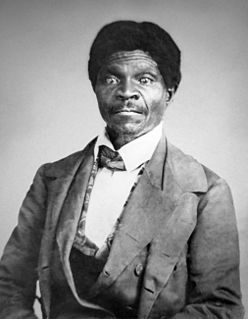
Dred Scott was an enslaved African-American man who, along with his wife, Harriet, unsuccessfully sued for freedom for themselves and their two daughters in the Dred Scott v. Sandford case of 1857, popularly known as the "Dred Scott decision". The case centered on Dred and Harriet Scott and their children, Eliza and Lizzie. The Scotts claimed that they should be granted their freedom because Dred had lived in Illinois and the Wisconsin Territory for four years, where slavery was illegal, and laws in those jurisdictions said that slaveholders gave up their rights to slaves if they stayed for an extended period.

Charleston is a city in and the county seat of Coles County, Illinois, United States. The population was 17,286, as of the 2020 census. The city is home to Eastern Illinois University and has close ties with its neighbor, Mattoon. Both are principal cities of the Charleston–Mattoon Micropolitan Statistical Area.

Oakland is a city in Coles County, Illinois, United States. The population was 739 at the 2020 census.
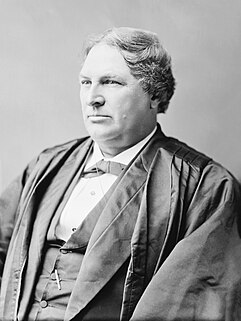
Samuel Freeman Miller was an American lawyer and physician who served as an associate justice of the U.S. Supreme Court from 1862 until his death in 1890.
Abraham Lincoln's position on slavery in the United States is one of the most discussed aspects of his life. Lincoln often expressed moral opposition to slavery in public and private. "I am naturally anti-slavery. If slavery is not wrong, nothing is wrong," he stated in a now-famous quote. "I can not remember when I did not so think, and feel." However, the question of what to do about it and how to end it, given that it was so firmly embedded in the nation's constitutional framework, in Congress, and in the economy of much of the country, was complex and politically challenging. In addition, there was the unanswered question, which Lincoln had to deal with, of what would become of the four million slaves if liberated: how they would earn a living in a society that had almost always rejected them or looked down on their very presence.

Ulysses S. Grant National Historic Site is a 9.65-acre (3.91 ha) United States National Historic Site located 10 miles (16 km) southwest of downtown St. Louis, Missouri, within the municipality of Grantwood Village. The site, also known as White Haven, commemorates the life, military career, and presidency of Ulysses S. Grant. Five historic structures are preserved at the site, including the childhood home of Ulysses' wife, Julia Dent Grant.
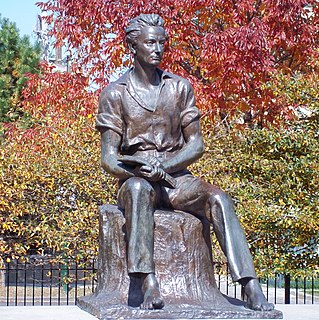
Abraham Lincoln was born on February 12 1809, in a one-room log cabin on the Sinking Spring farm, south of Hodgenville in Hardin County, Kentucky. His siblings were Sarah Lincoln Grigsby and Thomas Lincoln, Jr. After a land title dispute forced the family to leave in 1811, they relocated to Knob Creek farm, eight miles to the north. By 1814, Thomas Lincoln, Abraham's father, had lost most of his land in Kentucky in legal disputes over land titles. In 1816, Thomas and Nancy Lincoln, their nine-year-old daughter Sarah, and seven-year-old Abraham moved to what became Indiana, where they settled in Hurricane Township, Perry County, Indiana.
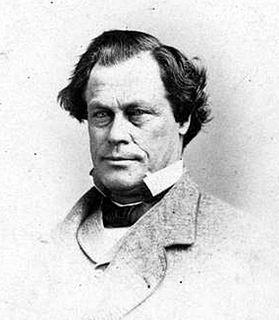
Owen Lovejoy was an American lawyer, Congregational minister, abolitionist, and Republican congressman from Illinois. He was also a "conductor" on the Underground Railroad. After his brother Elijah Lovejoy was murdered in November 1837 by pro-slavery forces, Owen, a friend of Abraham Lincoln, became a leader of abolitionists in Illinois, condemning slavery and assisting runaway slaves in escaping to freedom.
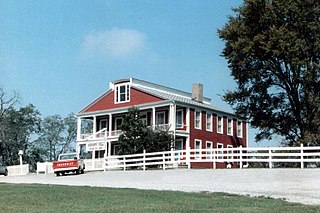
The Crenshaw House is an historic former residence and alleged haunted house located in Equality Township, Gallatin County, Illinois. The house was constructed in the 1830s. It was the main residence of John Crenshaw, his wife, and their five children.

The South Side German Historic District is a neighborhood within Quincy, Illinois, United States just south of downtown. The neighborhood includes most of Quincy's rich German architecture. The region is also widely known as "Calftown", named for the number of calves once owned by its inhabitants. It was added into the National Register of Historic Places in 1992 with a boundary increase in 1995.

Slavery in Indiana occurred between the time of French rule during the late seventeenth century and 1826, with a few traces of slavery afterward. When the United States first forcibly removed the Native Americans from the region, slavery was accepted as a necessity to keep peace with the Indians and the French. When the Indiana Territory was established in 1800, William Henry Harrison, a former slaveholder, was appointed governor and slavery continued to be tolerated through a series of laws enacted by the appointed legislature.
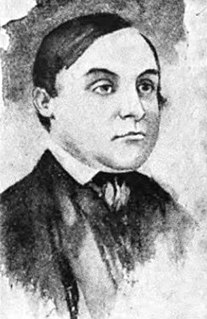
Orlando Bell Ficklin was a U.S. Representative from Illinois.

District of Columbia City Hall, also known as "Old City Hall" and the "District of Columbia Courthouse", is an historic building at Judiciary Square in downtown Washington, D.C. facing Indiana Avenue. Originally built for the offices of the government of the District of Columbia, the District's courthouse was subsequently used as a Federal courthouse, and was the scene of several notable criminal trials including those of three accused presidential assassins. The building was declared a National Historic Landmark in 1960. It now houses the District of Columbia Court of Appeals.
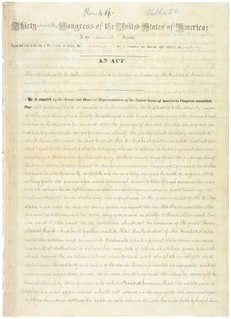
An Act for the Release of certain Persons held to Service or Labor in the District of Columbia, 37th Cong., Sess. 2, ch. 54, 12 Stat. 376, known colloquially as the District of Columbia Compensated Emancipation Act or simply Compensated Emancipation Act, was a law that ended slavery in the District of Columbia, while providing slave owners who remained loyal to the United States in the then-ongoing Civil War to petition for compensation. Although not written by him, the act was signed by U.S. President Abraham Lincoln on April 16, 1862. April 16 is now celebrated in the city as Emancipation Day.

Hovenden House, Barn and Abolition Hall is a group of historic buildings in Plymouth Meeting, Whitemarsh Township, Montgomery County, Pennsylvania. In the decades prior to the American Civil War, the property served as an important station on the Underground Railroad. Abolition Hall was built to be a meeting place for abolitionists, and later was the studio of artist Thomas Hovenden.
The Matson Trial (1847), officially Matson v. Ashmore et al. for the use of Bryant, was a freedom suit by former slave Anthony Bryant on behalf of his family in Coles County, Illinois. It is noted for the unusual circumstance where Abraham Lincoln, the future emancipator of slaves, defended a slave-owner against a slave. The case pitted Lincoln and former Illinois Attorney General Usher F. Linder against former US Representative Orlando B. Ficklin. Ficklin's case proved successful, and Bryant's family was emancipated based on free soil doctrine.
















